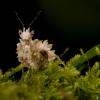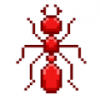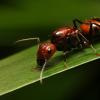Hi!
A few days ago I gave my single S. pallipes queen a few Tetramorium sp. e larvae. After some time alone, the queen decided to take the brood and place it on the wet cotton. To my surprise, she actually "adopted" the larvae! Whenever I disturb her, she picks up a larva and runs around for a bit. Today, I managed to see her actually feeding on the larva in the classic Stigmatomma fashion. The larva ended up getting sucked dry, probably due to the larva's inability to cope with skin puncture like a normal S. pallipes larva. I believe that the queen might be feeding the larvae trophic eggs, because one of them looks a bit larger than before. Perhaps the queen adopted the brood just to provide herself with an easy food source.
Has anyone else observed this before?
Edited by Connectimyrmex, November 17 2017 - 1:02 PM.






















